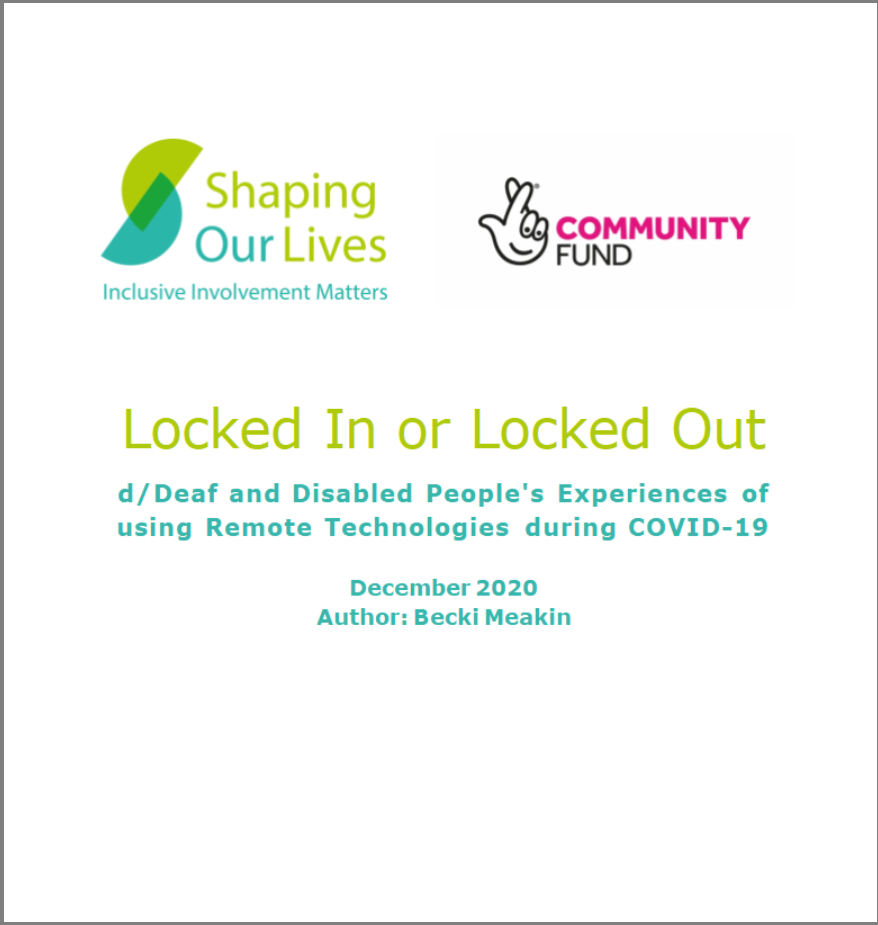Becki Meakin
December 2020
During the COVID-19 pandemic, there was a sudden adoption of remote technologies for a wide range of activities: social and leisure activities, peer groups and support activities, community services, education, work activities, health and social care provision.
This report, part of a four-part series investigating how the COVID-19 pandemic has impacted the lives of d/Deaf and Disabled people, details findings from a survey about the use of remote technology by d/Deaf and Disabled people during, and beyond, the first national COVID-19 lockdown.
It investigates which technologies have worked for people and why. Whilst the report finds that there are lots of positives to using remote technology, it is clear that it also presents a variety of concerns. For example, more training needs to be made available for d/Deaf and Disabled people who are required to use these new remote technologies. Guidelines for inclusive practices should be implemented for all types of remote technologies, and standards for using remote technologies should be applied to all interactions, in the same way that certain behaviours are adopted for face-to-face meetings. Recommendations for accessible and inclusive practice are detailed in the report.
In partnership/with support of: National Lottery Community Fund
Other reports in the series:
Download report (pdf)Download report (docx) 
